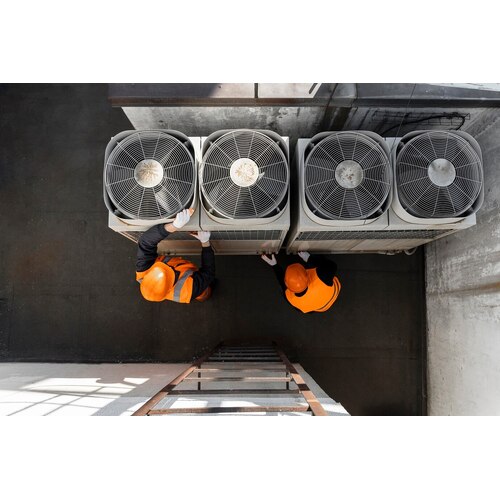Balancing Acts: How PICVs Redefine Building Efficiency
Our sales team tend to field a lot of questions about control valves, especially when clients are integrating them with systems powered by Niagara. Not surprising really, considering a fair chunk of our customers work in the building maintenance field. Most of these customers are looking for a direct drop-in to replace a tired old plug and seat valve, installed in a bygone era when TV was monochrome, and Elton John had hair (real hair).
But, just as Elton’s hair has moved on, so too has control valve technology. Enter stage right, the Pressure Independent Control Valve (PICV).
The Unsung Hero
Imagine stepping into a room where the air kisses your skin with the perfect hint of warmth or coolness - that's the artistry of the PICV at work. Think of it as your building's silent ninja, masterfully balancing the yin of energy consumption with the yang of thermal nirvana. These marvels of engineering are becoming the bedrock of modern buildings, where complexity is the norm, and energy efficiency is not just nice to have - it's a must-have.
The Inner Workings of a PICV
Understanding a PICV is like realizing your boring coworker is actually a wizard. A PICV merges two functionalities: flow regulation and differential pressure control.

Internals of a PICV. Credit: Siemens.
In a traditional system with fixed balancing valves, we're essentially playing a game of darts, where the board (the system pressure) is continuously moving. The PICV is that hustler who keeps hitting the bullseye.
When installed, the PICV is set to a desired flow rate. As water flows through the system, the valve measures the differential pressure across itself. If the pressure rises above the set point, the valve constricts, ensuring the flow rate remains consistent. Conversely, if the pressure drops, the valve opens wider to maintain the flow.
This dual action ensures that each part of a building receives the exact amount of heated or cooled water it needs, irrespective of changes in system pressure or demand from other parts of the building. It's the Goldilocks of building management: always keeping things just right. Ahhhh.
Temperature Control: It's Not Sexy, But It's Everything
Here's something you don't hear at cocktail parties: "Man, the PICV’s in my building are kicking ass." Why? Because nobody cares... until they're sitting in a pool of sweat or shivering like a Scottish nudist. A PICV, is the unsung hero in the shadows of our plantrooms, quietly balancing our comfort with the voracious energy appetite of modern buildings.

SmartX PIBCV. Credit: Schneider Electric
Saving Green by Going Green
PICVs aren't just about avoiding jumper weather indoors. They're about green - saving energy and cash. They slice through energy bills like a hot knife through butter, making building managers look like financial gurus and Mother Nature's BFFs.
Blueprints for the Future
The building game is changing. We're not just stacking bricks; we're crafting complex ecosystems. PICVs are the linchpins in this new world, where engineering marvel meets environmental stewardship. They're not just control valves; they're so much more than that.
Leave a comment
Popular Posts

Voltage Converters: Learn How They Work and How to Pick the Best Type

What is a Variable Speed Drive? A Beginner’s Guide to Understanding VSDs

What is a VFD in HVAC and How Does it Work?






























